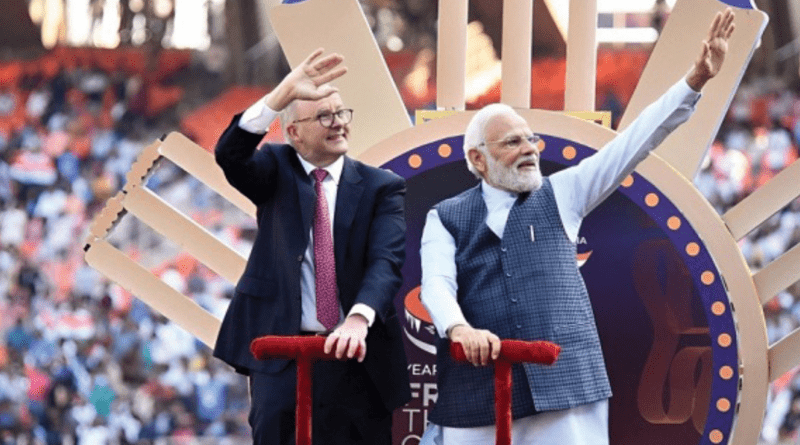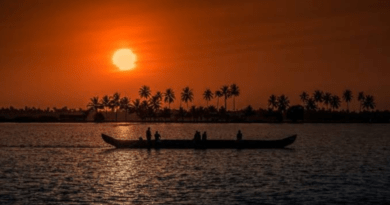The Authentic And Fantastic Indian-Australian Diaspora
In less than ten years, Australia and India have established an amazing and exciting friendship that holds the potential to be a turning point in the Indo-Pacific, particularly given the unfriendly and aggressive environment the region is currently facing. But for this to actually happen, it’s critical to acknowledge that, even though the government may be the main catalyst, a variety of stakeholders, including the diaspora—often referred to as “the human bridge” between nations—must play a vital role.
In fact, praise has frequently been given to the remarkable contribution made by a segment of the Indian-American community in achieving the historic 123 Agreement with Washington regarding the civilian use of nuclear power, as well as for depriving Islamabad of comparable recognition in spite of intense pressure from Beijing. Therefore, in order to enhance the bilateral narrative, New Delhi and Canberra must prioritise utilising the Indian-Australian diaspora as changemakers.
With a million members, Indian-Australians are currently Australia’s fastest-growing immigrant group. It represents a considerable section of the population in a nation of about 24 million people. It is anticipated that student inflows to Canada will sharply decline in 2024 due to the current tense ties between India and Canada, which do not appear to be improving anytime soon. Instead, students will likely choose to study in Australia, the UK, and the US. India currently ranks as Australia’s second-largest source of foreign students.
This implies that there will likely be an increase in the number of Indian migrants to Australia. How best to engage and leverage them is the question that emerges.
The local community and the host governments acknowledge the substantial contribution made by the Indian diaspora worldwide. In Australia, they have adapted to the needs of an ageing population that is growing faster than their skills. They’ve shown that they’re willing to work at any job that comes their way, including operating gas pumps, grocery stores, and taxis. Many have difficult lives that are not envied; they work long hours, save as much money as they can to send home to their family, or repay loans that enabled them to immigrate.
Numerous others have established their professional credentials and are employed as physicians, solicitors, chartered accountants, middle and senior managers in multinational companies and the Big 4, researchers and educators, architects, members of the armed forces and police departments, employees of state and federal governments, and, in the modern era, elected representatives, to mention a few. A few of them have received recognition and prizes for their achievements from the Australian government. When taken as a whole, they form a crucial element of the bilateral environment.
In fact, the remarkable array of occupations should have been a clear sign of the diversity of the diaspora. Nonetheless, a common misconception holds that because the diaspora is homogeneous, it is unnecessary to interact with its many groups. This regrettable error on the part of official negotiators on both sides has led to an excessive focus on the various community associations—the vociferous minority—that have grown in number. There are almost 140 associations in Sydney alone! Saying they don’t have a part would be inaccurate.
They undoubtedly make a contribution by promoting “fun, food, and festivals,” which have drawn local politicians and public servants to these events for photo chances. It’s surprising, in fact, how well the community associations have been able to position themselves as the authority on all things Indian.
However, they are not without restrictions. The strategic imperatives and difficulties that support the bilateral relationship—particularly the external dangers that jeopardise regional security and order—are not the focus of their discussion. Many would contend that their only goal is temporary, self-serving, and opportunistic. However, they have been wrongly associated for decades as being the only representatives of the diaspora. If Indo-Australian relations are to advance, this has to alter. It’s not as simple as it seems.
Currently, after years of being ignored, the important participants—the silent majority—who are reluctant and bashful to interact are starting to come out of their shells. They had preferred to remain a part of the exclusive circle to which they belonged and were at ease, seldom engaging with community associations outside of anonymous interactions and not being included on any lists of invitations to formal events. However, in any relationship, they are the main agents of change. In every region that New Delhi has designated as part of its developmental objectives, they are breaking new ground with their work. As we have in fact done, ignoring them simply serves to weaken our relationship.
If the diaspora is to be utilised as a force for change, it must be comprehended in all of its guises. The previous high-level committee report on the diaspora has to be reexamined in order to have a better understanding of how the diaspora could be efficiently utilised for the benefit of both countries in the present day.




